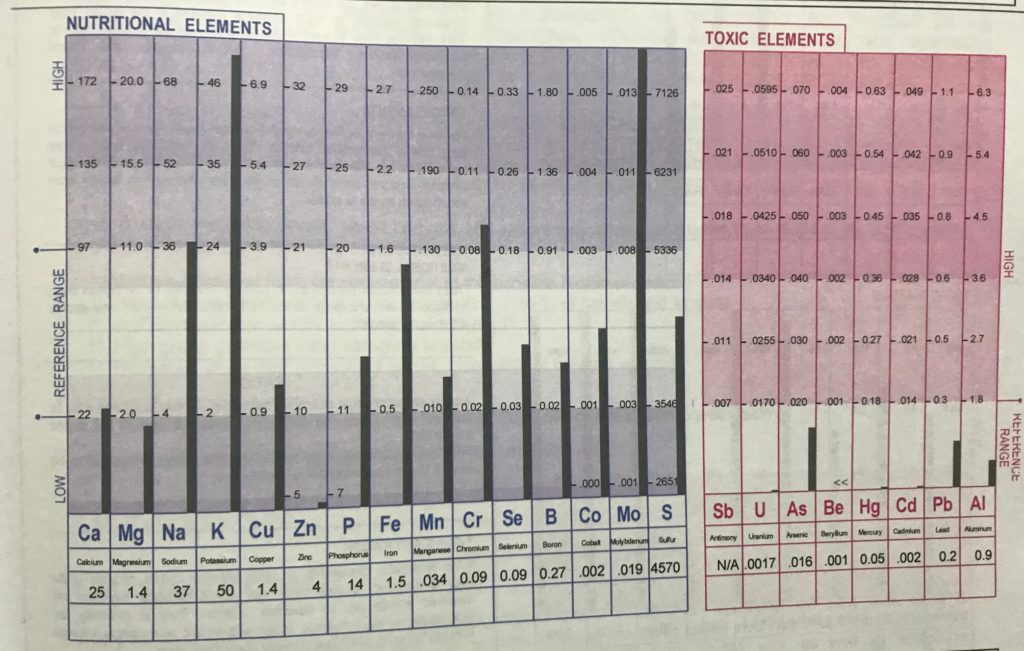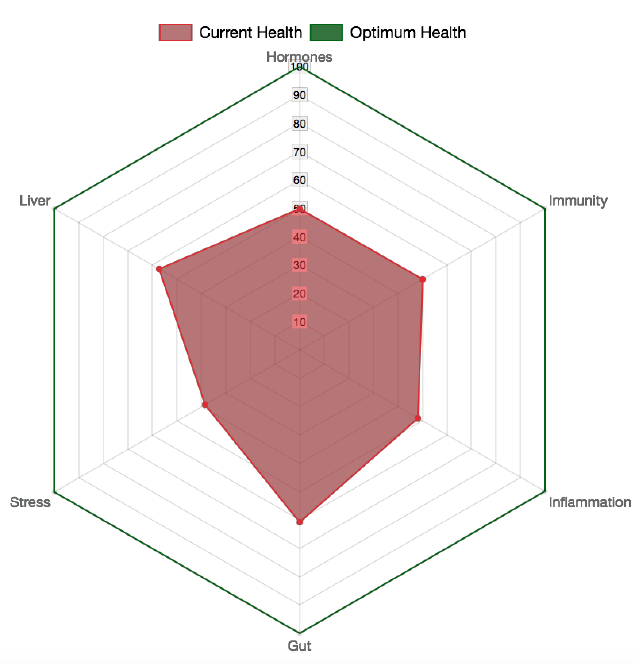Hair Mineral Analysis testing is a proven and effective way to assess the long term metabolic function of the body.
I regularly use this hair test in the clinic to assess immune function, thyroid and adrenal function and mental health, nutrient deficiencies and toxic metal levels.
You can listen to my podcasts discussing Hair Analysis in detail HERE and HERE.
I use hair analysis testing on virtually every client in the clinic, and I have completed thousands of these tests. It is an inexpensive way to receive a lot of information about your health, including the metabolic functioning of organs, that is not really possible to assess with other tests.
Not only does hair mineral analysis show the levels of your ‘good’ and ‘bad’ minerals over the long term, but it also allows us to look deeply at how your powerhouses of the body – the endocrine glands – are functioning.
Digestive function, adrenal and thyroid function, and immune system can be easily and quickly assessed via hair analysis. Further tests such as blood and salivary tests can be ordered if necessary.
I also conduct practitioner training in hair analysis that can be accessed HERE.
What the hair analysis test report shows

- The report shows your levels of essential minerals and compares them to a norm. Minerals included: Calcium, Magnesium, Sodium, Potassium, Copper, Zinc, Phosphorus, Iron, Manganese, Chromium, Selenium, Boron, Cobalt, Molybdenum and Sulphur
- The report also shows levels of toxic heavy metals: Uranium, Arsenic, Beryllium, Mercury, Cadmium, Lead, Aluminium, Tin, Titanium and others
- As I am a fully trained practitioner and highly experienced in interpreting Hair Analysis tests, I can also find distinct patterns within the report that clinically correlate to many health conditions.
Who is hair mineral testing for?
Everyone! In clinic, I use it to help address the following health conditions:
- Adrenal fatigue, including unexplained fatigue, aches and pains, sleep issues
- Thyroid conditions
- Insomnia
- Infertility
- Headaches/migraines
- Weight gain/loss, appetite issues and blood sugar imbalances
- Hormonal dysregulation includes: oestrogen dominance, unexplained menopausal symptoms, PMS, PCOS, endometriosis, etc
- Mental health issues: Pyrrole disorder, anxiety, depression, bi-polar depression, OCD, ADHD, etc
- Cardiovascular disorders
- Immune disorders including long term infections such as Epstein Barr virus (glandular fever), hayfever and allergies, histamine dysregulation
- Children’s immune disorders: asthma, eczema, allergies, intolerances
- Children’s developmental disorders: anxiety, ADHD, violent behaviour, tantrums/temper outbursts, dyslexia, poor school performance
- Anyone who has occupational or environmental exposure to toxins, e.g., mechanics, painters, metal workers, glass workers, farmers, etc
How does the testing process work?
If you come into the True Foods Nutrition clinic (Sydney, NSW), I personally take your hair sample and mail it to the laboratory.
If you are consulting by distance:
- please take a sample following the instructions below
- mail it in a PAPER only envelope (no plastic zip lock bags or foil) to my postal address
My postal address can be found on your intake form, or if you’re consulting with Elizabeth Cowley, you can mail it to her. if you are consulting with her.
How to take a hair tissue sample?
Taking a hair sample is quick and easy if you follow these instructions
Here is a VIDEO showing how to collect the hair.
- Cut hair with clean stainless steel scissors
- To make the sample less conspicuous, cut small amounts of hair from the nape of the neck and/or several other locations on the back of the scalp
- Cut hair as close to the scalp as possible- we need the most recent growth. Approximately 1 tablespoon of hair is required.
- Note for men who shave their hair- collect 1 tbsp of shavings. The length of the hair is not important
- If the sampled hair is less than 4cm long, keep all of it for testing. If the hair is longer than this, cut off and keep the 4cm of hair that was growing closest to the scalp (discard the excess)
- Place the hair sample in a paper envelope and mail it to my postal address (this will be in your consult notes)
Note: Please provide clean, well-rinsed, untreated and non-coloured hair. If hair is treated or coloured, wait six to eight weeks and take a sample from the freshly grown untreated hair.
Your sample will be mailed to a laboratory in the US for testing. It takes about 3 weeks to receive the report after mailing.
More information
Listen to this FX Medicine Podcast and this Humanley Podcast, where I discuss how and why Hair Analysis can help in detail.






